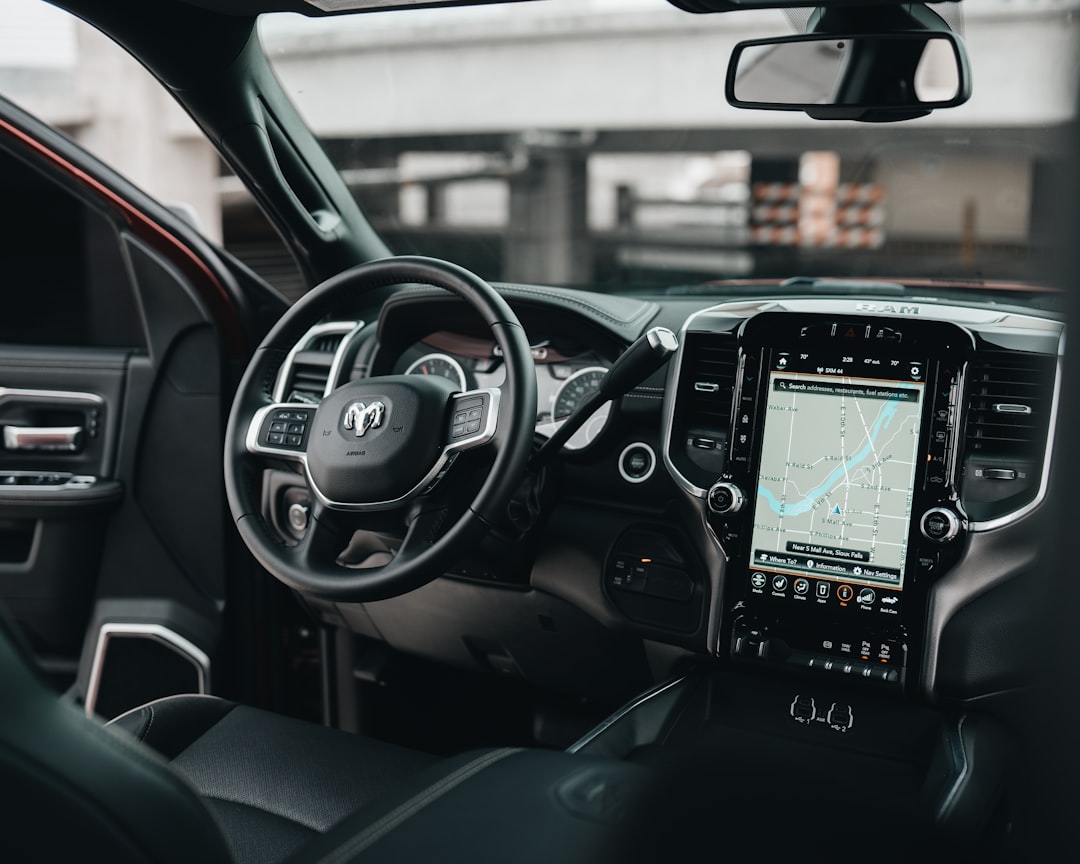Connected Car Technology Trends: 10 Powerful Must-Know Insights 2025
Why Connected Car Technology Trends Matter More Than Ever
Connected car technology trends are reshaping how we drive, work, and live on the road. These smart vehicles use internet connectivity, sensors, and advanced software to communicate with other cars, infrastructure, and cloud services – creating a mobile ecosystem that’s part smartphone, part computer, and all future.
Here are the key connected car technology trends you need to know:
Market Growth:
- 400+ million connected cars expected by 2025 (up from 237 million in 2021)
- 95% of new vehicles will be connected by 2030
- $121 billion global market size projected for 2025
Core Technology Trends:
- Vehicle-to-Everything (V2X) communication
- Over-the-air (OTA) software updates
- AI-powered predictive maintenance
- 5G connectivity for real-time data exchange
- Software-defined vehicles with continuous upgrades
Revenue Opportunities:
- Usage-based insurance programs
- Subscription-based features
- In-car commerce and services
- Data marketplace licensing
Modern cars now contain up to 150 million lines of code and can generate 25 gigabytes of data per hour. This isn’t just about entertainment systems anymore – it’s about creating vehicles that get smarter, safer, and more valuable over time.
The convergence of connectivity with electric and autonomous vehicle trends is creating what McKinsey calls “platform-based mobility” – where cars become upgradeable digital platforms rather than static mechanical products.

How Connected Cars Talk, Think & Evolve
Think of your car having a conversation with the world around it – that’s essentially what connected car technology trends have made possible. Modern vehicles don’t just drive; they communicate, learn, and get smarter over time through sophisticated layers of connectivity.
At its heart, every connected car relies on telematics systems – a fancy term for combining telecommunications with computer technology. These systems act like your car’s communication hub, using cellular networks (4G and 5G), Wi-Fi, Bluetooth, and satellite connections to stay in constant touch with the outside world.
What’s fascinating is how connectivity works hand-in-hand with other automotive innovations. Electric vehicles (EVs) use connectivity to find charging stations and optimize battery performance, while autonomous vehicles (AVs) depend on real-time data to steer safely. It’s like giving these advanced cars the ability to see, think, and react intelligently.
The real game-changer is the software-defined vehicle concept. Instead of being locked into whatever features your car had when you bought it, these vehicles can gain new capabilities through over-the-air (OTA) updates – just like your smartphone. Tesla pioneered this approach, but now it’s become so common that 40% of automotive recalls are fixed with software updates rather than trips to the service center.
Edge computing and GNSS (Global Navigation Satellite System) work together with dead reckoning technology to help vehicles understand exactly where they are and what’s happening around them, even when GPS signals are weak.
More info about Automotive Connectivity Solutions
Anatomy of Vehicle Connectivity
Modern cars are basically rolling supercomputers packed with incredible technology. Under the hood (and throughout the vehicle), you’ll find hundreds of sensors constantly monitoring everything from engine temperature to how you’re driving.
These sensors feed information to up to 100 electronic control units (ECUs) – think of them as specialized mini-computers that manage different parts of your car. Some handle the engine, others manage safety systems, and still others control entertainment features.
The software complexity is mind-blowing. Today’s vehicles contain up to 150 million lines of code – that’s more than most major social media platforms! These systems process data from GPS, cameras, radar, and diagnostic sensors to create a complete picture of what’s happening with your vehicle.
High-performance computers are increasingly taking over from those distributed ECUs, centralizing vehicle intelligence into powerful processing units. Meanwhile, cloud gateways serve as the bridge between your car and external services, enabling real-time data sharing and analysis.
The Five Modes of V2X Communication
Vehicle-to-Everything (V2X) communication is where connected cars really show their intelligence. This technology operates through five distinct modes, each serving specific purposes:
Vehicle-to-Vehicle (V2V) lets cars share information about their position, speed, and direction. Imagine two cars approaching a blind intersection – V2V allows them to “see” each other even when drivers can’t, preventing potential accidents.
Vehicle-to-Infrastructure (V2I) connects your car with traffic lights, road signs, and smart city systems. Traffic signals can tell approaching vehicles when they’ll change, helping optimize traffic flow and reduce fuel consumption.
Vehicle-to-Pedestrian (V2P) uses smartphone apps or wearable devices to alert drivers about nearby pedestrians and cyclists. This is especially valuable in busy urban areas where visibility can be challenging.
Vehicle-to-Cloud (V2C) gives your car access to real-time traffic data, weather updates, mapping information, and cloud-based services like predictive maintenance analytics.
Vehicle-to-Network (V2N) provides broader connectivity with mobile networks, enabling internet access, entertainment services, and communication with various online platforms.
These communications primarily use the 5.9 GHz spectrum, with two main competing standards. DSRC (Dedicated Short Range Communications) is based on Wi-Fi technology, while C-V2X (Cellular V2X) uses 4G and 5G cellular networks. Currently, about 1 million V2X-enabled vehicles worldwide are split evenly between these technologies, though experts predict that 5G-based C-V2X will dominate with over 90% market share by 2034.
Top Connected Car Technology Trends for 2025 and Beyond
The automotive world is changing faster than ever, and connected car technology trends are leading this exciting revolution. We’re not just talking about cars that can play your Spotify playlist anymore – these are vehicles that think, learn, and evolve like living organisms.

The biggest game-changer right now is AI-powered perception. Your car’s brain is getting smarter every day, using machine learning to understand what’s happening around it. Instead of just following basic rules, these systems learn from millions of driving scenarios to predict when someone might run a red light or when that cyclist might swerve into traffic.
5G networks are finally delivering on their promise, and early 6G development is already underway. While your current 4G connection might take 50-100 milliseconds to respond, 5G cuts that down to under 10 milliseconds. That might not sound like much, but when you’re traveling at highway speeds, those milliseconds can mean the difference between a close call and a collision.
Edge computing is solving one of connectivity’s biggest challenges – what happens when your internet cuts out? By processing critical data right in the vehicle, cars can keep their safety systems running even when they lose connection to the cloud. Think of it as giving your car its own mini data center.
The amount of information these vehicles generate is mind-boggling. Big data analytics platforms now handle the 8-32 terabytes of data that a single autonomous vehicle creates during an eight-hour drive. That’s enough data to fill your laptop’s hard drive several times over, just from one day of driving.
Digital twins are creating virtual copies of entire vehicles and traffic systems. Manufacturers can test new features on these digital replicas without building expensive prototypes or putting anyone at risk. It’s like having a video game version of your car that helps engineers make the real thing better.
Blockchain technology is moving beyond cryptocurrency into automotive applications. We’re seeing secure vehicle identity systems, automatic toll payments, and transparent tracking of car parts from factory to dealership.
Generative AI is making in-car assistants feel more like helpful passengers than robotic computers. These systems can plan your route, find that Thai restaurant you mentioned last week, and even help draft emails while you focus on driving.
Of course, all this connectivity creates new risks. Cybersecurity standards like ISO/SAE 21434 are becoming mandatory as hackers increasingly target connected vehicles. The automotive cybersecurity market is racing to keep up, expected to reach $2.7 billion by 2027.
10 Connected Car Technology Trends Shaping 2025
The connected car technology trends hitting the road in 2025 are reshaping everything about how we drive and interact with our vehicles.
AI-powered voice assistants are getting scary good at understanding what you actually want. Instead of repeating “call Mom” three times, these systems understand context and can handle requests like “remind me to pick up flowers when I’m near that shopping center we went to last month.”
Centralized E/E architectures are simplifying the chaos under the hood. Rather than having hundreds of separate computer modules fighting for attention, manufacturers are consolidating everything into a few powerful computers that work together seamlessly.
Sensor fusion combines data from cameras, radar, and LiDAR to create a super-accurate picture of the world around your car. It’s like giving your vehicle eagle eyes, bat sonar, and laser precision all at once.
HD live maps provide lane-level accuracy that updates in real-time. These aren’t your grandfather’s road maps – they know exactly which lane you’re in and can warn you about construction that started five minutes ago.
Predictive maintenance uses machine learning to spot problems before they strand you on the highway. Your car might tell you “your brake pads will need replacing in about 2,000 miles” instead of waiting for that awful grinding sound.
Usage-based insurance rewards good drivers with lower premiums based on actual driving data rather than age or zip code. Drive safely, pay less – it’s that simple.
Advanced connectivity through 5G networks enables split-second communication between vehicles and infrastructure, making traffic flow smoother and roads safer for everyone.
Smart sensors are getting better and cheaper, bringing advanced safety features to mainstream vehicles instead of just luxury cars.
Vehicle diagnostics now provide detailed health reports that would make your doctor jealous, tracking everything from engine performance to tire pressure with incredible precision.
Human-machine interfaces are becoming more intuitive, using voice commands, gestures, and even eye tracking to minimize the time you spend looking away from the road.
Emerging Connected Car Technology Trends to Watch Through 2030
The connected car technology trends emerging for 2030 sound like science fiction, but they’re closer than you might think.
6G V2X communication will make today’s fastest connections look like dial-up internet. We’re talking about speeds up to 100 times faster than 5G, enabling cars to share detailed 3D maps and coordinate complex maneuvers in real-time.
Quantum-safe security might sound like something from a spy movie, but it’s becoming essential. As quantum computers get more powerful, they could crack today’s encryption like a master key. Automakers are already developing quantum-resistant security systems to stay ahead of future cyber threats.
Vehicle-to-grid energy trading will turn electric cars into mobile power plants. Imagine your EV automatically selling energy back to the grid during peak demand hours while you’re at work, then buying cheaper power at night to charge up. Your car could literally pay for itself through smart energy trading.
These aren’t just cool gadgets – they’re building blocks for a transportation system that’s safer, cleaner, and more efficient than anything we’ve seen before.
Market Size, Revenue Models & Monetization Playbook
The connected car industry is experiencing explosive growth that’s reshaping how automakers think about making money. We’re looking at a $121 billion market by 2025 – and that’s just the beginning.
What makes this even more exciting is how connected car technology trends are creating entirely new ways for companies to generate revenue. Instead of just selling a car once, manufacturers can now build ongoing relationships with customers that last for years.
The numbers tell an interesting story about global adoption. In the United States, 91% of new vehicles sold in 2020 were already connected. Asia-Pacific is catching up fast at 51%, while Latin America sits at 37%. China deserves special mention here – 9 out of 10 drivers now use connected car features regularly.
Here’s where it gets really interesting for the industry: McKinsey research shows that customer willingness to switch car brands for better connectivity jumped from 20% in 2014 to 50% in 2022. That’s a massive shift that’s forcing every automaker to take connectivity seriously.
By 2030, we expect 95% of all new cars to come with built-in connectivity. That’s not just a technology trend – it’s a complete change of the automotive business model.
Usage-based insurance programs are already showing impressive results. Insurers can offer discounts up to 30% for safe drivers by using real-time driving data. It’s a win-win situation where good drivers save money and insurers reduce their risk.
The subscription model is gaining serious traction too. About 39% of customers now prefer subscription payments over one-time purchases for connected features. Surprisingly, over 60% want to pay annually rather than monthly, suggesting they see connectivity as essential rather than optional.
Data marketplaces represent a huge untapped opportunity. Every connected car generates roughly 25 gigabytes of data per hour. That information is incredibly valuable for urban planning, traffic optimization, and location-based services.
In-car commerce is opening up new possibilities for brands to connect with customers. Imagine ordering your morning coffee or making dinner reservations directly through your car’s interface while stuck in traffic.
Mobility-as-a-Service platforms are integrating connected vehicles with public transportation and ride-sharing to create seamless travel experiences that go far beyond just owning a car.
| Revenue Stream | Market Size (2025) | Annual Growth Rate | Key Players |
|---|---|---|---|
| Subscription Services | $45B | 25% | OEMs, Tech Companies |
| Data Licensing | $18B | 35% | Data Brokers, Analytics Firms |
| Usage-Based Insurance | $12B | 28% | Insurance Companies |
| In-Car Commerce | $8B | 40% | Retailers, Service Providers |
More info about Car Tech Updates
From One-Off Sales to Rolling Software Updates
The automotive industry is experiencing its biggest business model shift since Henry Ford invented the assembly line. Traditional one-time vehicle sales are evolving into continuous relationships that can last the entire life of the car.
Software-defined vehicles are making this change possible. Instead of waiting for the next model year to get new features, customers can now receive upgrades, improvements, and entirely new capabilities through over-the-air updates.
Pay-per-feature models are becoming increasingly popular. Customers can open up capabilities like improved acceleration, advanced driver-assistance features, or premium entertainment options whenever they want them. It’s like upgrading your smartphone apps, but for your car.
OTA upselling is revolutionizing how automakers think about product development. They can add new features, fix problems, and improve performance throughout the vehicle’s lifespan. This means your car can literally get better over time.
The financial impact is staggering. McKinsey estimates this shift toward continuous software updates could add $400-600 billion in annual revenue to the automotive industry by 2030. That’s because instead of one transaction, automakers can maintain revenue relationships for the typical 10-15 year vehicle lifespan.
Lifetime customer value is becoming the new metric that matters. When you can continuously improve and add features to a vehicle, customers become long-term partners rather than one-time buyers.
Data Is the New Premium Fuel
Connected vehicles are essentially data factories on wheels, generating information that’s valuable to everyone from city planners to insurance companies. Each connected car produces approximately 25 gigabytes of data per hour – that’s enough to fill several smartphones every single day.

This data includes location patterns, driving behavior, vehicle performance metrics, and user preferences. When properly anonymized and aggregated, it becomes incredibly valuable for multiple industries.
Anonymized data licensing creates new revenue streams while protecting individual privacy. Traffic pattern data helps city planners optimize infrastructure investments. Driving behavior information assists insurance companies in developing better products and pricing models.
The key to success in data monetization is implementing privacy-by-design principles from the start. This means collecting only necessary information, using data only for stated purposes, and giving users control over their data preferences.
Companies that master this balance between value creation and privacy protection will build sustainable competitive advantages. Those that don’t risk facing regulatory penalties and losing consumer trust – both of which can be extremely expensive in today’s market.
McKinsey insights on connectivity value show that the most successful companies treat data as a strategic asset rather than just a by-product of connectivity.
Risks, Regulations & Cyber-Resilience
With great connectivity comes great responsibility – and significant risk. As connected car technology trends push vehicles toward becoming smartphones on wheels, they’re also creating new vulnerabilities that didn’t exist when cars were purely mechanical machines.
The numbers tell the story. The automotive cybersecurity market is racing toward $2.7 billion by 2027, reflecting just how seriously the industry is taking these threats. This isn’t theoretical anymore – we’re dealing with real-world risks that could affect millions of drivers.
Cyber-attacks on vehicles aren’t science fiction. They range from relatively harmless privacy breaches to genuinely terrifying scenarios where hackers could potentially control steering or brakes. The infamous 2015 Jeep Cherokee incident, where security researchers demonstrated remote control of a moving vehicle, served as a wake-up call for the entire industry. Suddenly, everyone realized that cars could be hacked just like computers.
Data privacy presents another challenge. Your connected car knows everything about you – where you live, where you work, how fast you drive, even who you call while driving. This intimate data requires the same protection as your medical records or financial information. Regulations like Europe’s GDPR and California’s CCPA are forcing automakers to be much more careful about how they collect, store, and use this personal information.
Supply chain vulnerabilities add another layer of complexity. Modern vehicles contain parts from hundreds of suppliers worldwide, and each component could potentially introduce security risks. The 2021 semiconductor shortage showed us just how interconnected and vulnerable these supply chains can be. When one supplier has problems, it can affect the entire industry.
The good news? Governments and industry groups are taking action. Standards like ISO/SAE 21434 now provide clear frameworks for managing cybersecurity throughout a vehicle’s entire lifecycle. UN Regulations R155 and R156 require new vehicles to have proper cybersecurity management systems and secure software update procedures.
Smart city policies are also accelerating adoption of secure connectivity. The EU’s Intelligent Speed Assistance (ISA) mandate requires all new vehicles sold from 2024 to include speed limit enforcement systems. Nine out of ten automakers are choosing map-based solutions for compliance, driving adoption of secure, connected mapping technologies.
NCAP safety mandates create additional momentum by including new safety features in their ratings. When the EU NCAP added Automatic Emergency Braking to its test criteria, adoption jumped from just 5% of new vehicles in 2014 to 71% in 2021. These rating systems help consumers identify safer, more secure vehicles.
Scientific research on automotive cybersecurity continues to evolve as threats become more sophisticated. The key is staying ahead of bad actors while maintaining the benefits that connectivity brings to safety, convenience, and efficiency.
More info about Advanced Car Technology
Building Hacker-Proof Cars
Creating truly secure connected vehicles requires thinking like both an engineer and a hacker. It’s not enough to add security as an afterthought – it needs to be built into every layer of the system from the ground up.
Secure boot processes act like a digital bouncer for your car’s computer systems. They ensure that only legitimate, authenticated software can run when the vehicle starts up. Think of it as checking IDs at the door – no unauthorized code gets in.
Encryption scrambles all the data flowing between your car and the outside world. Even if hackers intercept the communications, they’ll just see meaningless gibberish instead of useful information. It’s like having all your car’s conversations in an unbreakable secret code.
Intrusion detection systems work like digital security guards, constantly monitoring the vehicle’s networks for suspicious activity. When they spot something that doesn’t look right, they can alert security teams and automatically block potentially malicious traffic.
OTA patching cadence might be the most important defense of all. When security researchers find new vulnerabilities, automakers can push protective updates to entire fleets within hours or days. This is compared to traditional recall campaigns that could take months or years to reach all affected vehicles.
The best part? These security measures are becoming invisible to drivers. You shouldn’t have to think about encryption keys or security certificates when you’re trying to get to work. The most successful security implementations are the ones you never notice.
Policy & Infrastructure Accelerators
Government policies and infrastructure investments are the rocket fuel propelling connected vehicle adoption forward. Without supportive regulations and smart infrastructure, even the best connected car technology trends would struggle to reach their full potential.
The EU ISA mandate is perhaps the most influential policy driving global adoption. By requiring Intelligent Speed Assistance in all new vehicles, European regulators are essentially mandating that cars stay connected to real-time mapping data. This single regulation is pushing automakers worldwide to implement connected mapping technologies.
US NTSB recommendations include vehicle-to-vehicle communication requirements for new vehicles, though the implementation timeline is still being debated. The regulatory process moves slowly, but the direction is clear – connected safety features are becoming standard equipment, not optional extras.
China’s V2X rollout represents the most ambitious connected vehicle deployment globally. With plans to add 30 million V2X-enabled vehicles annually by 2034, China is essentially creating a living laboratory for connected mobility. The Chinese government is backing this with massive infrastructure investments in smart traffic signals and roadside communication units.
Public-private partnerships are proving essential for building the infrastructure backbone that connected vehicles need. These collaborations fund the smart traffic signals, high-speed networks, and roadside communication units that enable V2X communication. Without this infrastructure investment, connected cars would be like smartphones without cell towers – technically impressive but practically useless.
The result is a positive feedback loop. Better policies drive infrastructure investment, which enables more sophisticated connected features, which demonstrate value to consumers and regulators, leading to even more supportive policies. It’s a virtuous cycle that’s accelerating adoption faster than many experts predicted.
The Road Ahead: Preparing for a Hyper-Connected Mobility Future
The automotive world is changing faster than a Formula 1 pit stop, and everyone in the ecosystem needs to buckle up for the ride. Connected car technology trends aren’t just reshaping vehicles – they’re changing how we buy, sell, service, and think about transportation itself.
Dealer digital change is happening whether dealerships are ready or not. Smart dealers are already investing in AI tools that can predict which cars will sell fastest, VR and AR showrooms that let customers “test drive” vehicles without leaving the lot, and data analytics platforms that know what you want before you do. The days of walking the lot with a clipboard are numbered.
Consumer expectations have shifted dramatically. Today’s car buyers don’t just want horsepower and good gas mileage – they want their vehicle to be as smart as their smartphone. Research shows that 40% of consumers will actually switch car brands for better connectivity features. That’s like choosing your next car based on its Wi-Fi rather than its engine.
Fleet and logistics optimization is where connected vehicles really show their value. Commercial fleets using telematics data are seeing 10-15% reductions in operational costs by optimizing routes, predicting when trucks need maintenance, and coaching drivers to be safer and more fuel-efficient. It’s like having a crystal ball for your entire fleet.
Smart city integration turns individual connected cars into part of a larger urban brain. When your car talks to traffic lights, shares road condition data, and helps city planners understand traffic patterns, everyone benefits from smoother commutes and better infrastructure decisions.
Sustainable mobility gets a major boost from connectivity too. Connected cars can find the most efficient routes, coach drivers on eco-friendly habits, and coordinate with renewable energy systems for optimal electric vehicle charging times.
The talent challenge is real though. The automotive industry needs people who understand both cars and code, hardware and software, traditional engineering and AI algorithms. Companies are investing heavily in upskilling their workforce because building connected cars requires a very different skill set than building traditional vehicles.

Action Plan for Stakeholders
Every player in the automotive ecosystem needs a game plan for the connected future, and the strategies look quite different depending on your role.
OEMs need to think like tech companies now. Building software-defined vehicle architectures isn’t optional anymore – it’s survival. The smart manufacturers are developing ongoing customer relationships through subscription services and investing seriously in cybersecurity. When your car can be updated like an iPhone, you better make sure hackers can’t get in.
Suppliers face perhaps the biggest adjustment. They’re moving from hardware cycles measured in years to software cycles measured in weeks. The successful ones are building expertise in AI and machine learning while implementing rock-solid cybersecurity throughout their supply chains. It’s not enough to make great parts anymore – those parts need to be smart and secure.
Dealers are finding they need to become part tech support, part sales consultant. Training staff on connected vehicle features is crucial because customers have questions that go far beyond “What’s the fuel economy?” The service side is evolving too, with software-defined vehicles requiring different maintenance approaches than traditional cars.
Tech providers entering the automotive space quickly learn that cars aren’t just smartphones on wheels. Automotive-grade solutions must meet safety and reliability standards that would make a software developer’s head spin. Building partnerships with traditional automotive players and understanding automotive-specific use cases separates the successful tech companies from the wannabes.
City planners have a unique opportunity to shape the future of urban mobility. Investing in smart infrastructure that supports V2X communication and developing policies that encourage connected vehicle adoption can transform how people move through cities. Vehicle data becomes a powerful tool for optimizing everything from traffic signals to infrastructure investments.
Investors need to understand that this isn’t just about building better cars – it’s about fundamentally different business models. The shift from hardware-centric to software-centric revenue streams comes with different risk profiles and growth patterns than traditional automotive investments.
KPI Dashboard for 2025 Success
Measuring success in the connected car world requires looking at metrics that didn’t exist a decade ago. Traditional automotive KPIs like units sold and warranty claims are still important, but they don’t tell the whole story anymore.
Feature take-rate tells you which connected capabilities customers actually use versus which ones sounded good in focus groups. If you’re offering 20 different connected features but customers only use three of them, that’s valuable intelligence for future development priorities.
Average revenue per vehicle (ARPV) tracks the holy grail of automotive change – ongoing revenue from software, services, and subscriptions. This metric shows whether manufacturers are successfully transitioning from one-time sales to continuous customer relationships. The best performers are seeing ARPV grow significantly year over year.
OTA update completion rates measure both technical capability and customer trust. High completion rates indicate that your over-the-air update system works reliably and that customers trust you enough to let you modify their vehicle remotely. Low rates might signal technical problems or customer confidence issues.
Cybersecurity incident scores track security events and response times, becoming increasingly critical as vehicles become more connected and vulnerable. This isn’t just about counting attacks – it’s about measuring how quickly and effectively you can respond when something goes wrong.
The companies that master these new metrics while maintaining excellence in traditional automotive measures will be the ones leading the connected car technology trends of tomorrow.
Frequently Asked Questions about Connected Car Technology
We get a lot of questions about connected car technology trends and how they affect everyday drivers. Let’s clear up some common confusion and help you understand what these smart vehicles really mean for you and your family.
What is the difference between connected, electric and autonomous cars?
Think of these as three different flavors of automotive innovation that can work together or separately. A connected car is like giving your vehicle a smartphone brain – it can talk to other cars, traffic lights, and the internet to share information and access services. Your car might still run on regular gasoline, but it’s chatting with the world around it.
Electric vehicles are all about the power source. Instead of filling up at a gas station, you plug them in to charge a battery. An electric car might be connected to the internet, or it might be a simpler model without smart features.
Autonomous vehicles are the self-driving cars you’ve heard about. They use cameras, sensors, and artificial intelligence to steer without human input. Most autonomous cars need to be connected to work properly – they rely on real-time traffic data and communication with other vehicles to drive safely.
Here’s where it gets interesting: these technologies love working together. Connected car technology trends show that by 2030, most new vehicles will combine all three elements. Your future car might drive itself to a charging station, automatically pay for electricity, and even earn money by selling power back to the grid when you’re not using it.
The synergy makes each technology better. Connected features help electric cars find charging stations and optimize battery life. Autonomous systems work more safely when they can communicate with other vehicles and infrastructure. It’s like having a car that’s smart, clean, and helpful all at once.
How do over-the-air updates work and are they safe?
Remember when you had to take your phone to a store every time you wanted new features? Over-the-air updates save you from that hassle with your car. Your vehicle downloads software improvements automatically, just like your smartphone gets app updates.
The process is surprisingly straightforward. When your car is parked and turned off, it connects to your manufacturer’s servers through cellular networks or your home Wi-Fi. It downloads new software packages that might include everything from improved navigation to better fuel efficiency algorithms.
Safety is taken seriously – probably more seriously than your phone updates. Each update includes multiple security checks to make sure it’s authentic and hasn’t been tampered with. The software has digital signatures that work like high-tech fingerprints, proving the update really came from your car manufacturer.
If something goes wrong, your car can roll back to the previous software version automatically. Manufacturers also test updates on small groups of vehicles before rolling them out to everyone. Currently, 40% of automotive recalls are fixed through software updates rather than trips to the dealership – saving time and hassle for everyone involved.
The best part? Your car can actually get better over time. Instead of waiting years for a new model with improved features, your current vehicle can gain new capabilities through these updates.
Will connected car data raise privacy concerns for drivers?
Your connected car does know a lot about you – where you drive, when you travel, how fast you go, and even who you call through Bluetooth. It’s natural to feel concerned about this information and who might access it.
The good news is that privacy laws are catching up with technology. Regulations like GDPR in Europe and CCPA in California require car manufacturers to protect your data with the same care as banks protect financial information.
Most manufacturers follow privacy-by-design principles. This means they collect only the data needed for specific features, anonymize personal information whenever possible, and give you control over what gets shared. Many cars let you opt out of data collection for convenience features while keeping essential safety functions active.
You should be able to review your car’s privacy settings just like you would on your smartphone. Look for options to control location sharing, diagnostic data transmission, and third-party service access. Transparent privacy policies should explain exactly what data is collected and how it’s used.
The key is finding the right balance. Some data sharing enables valuable features like real-time traffic updates, emergency assistance, and predictive maintenance alerts. The goal is making sure you understand what you’re sharing and feel comfortable with the trade-offs.
As connected car technology trends continue evolving, privacy protection is becoming a competitive advantage. Manufacturers who build trust through transparent data practices are more likely to succeed in the long run.
Conclusion
The connected car technology trends we’ve explored represent far more than just cool new gadgets – they’re completely changing what it means to own and drive a vehicle. Think about it: your car is becoming as smart as your smartphone, with the ability to learn, grow, and get better over time.
The convergence of connectivity with electric and autonomous vehicle technologies is creating something we’ve never seen before. Cars are changing into software platforms that continuously evolve and improve, rather than depreciating assets that slowly become outdated.
The safety benefits alone are game-changing. V2X communication can prevent accidents that even the most alert human drivers might miss. When your car can “talk” to other vehicles and infrastructure, it creates a safety net that goes far beyond what traditional sensors and human reflexes can provide.
The revenue opportunities are equally impressive. The shift from one-time sales to ongoing software and service relationships could add hundreds of billions in annual industry revenue. For consumers, this means vehicles that actually get more valuable over time through software updates and new features.
The efficiency gains touch every aspect of driving. Connected vehicles optimize routes in real-time, predict when your brakes need replacing before they fail, and work with smart city systems to reduce both congestion and emissions.
For automotive enthusiasts and sports fans who follow our coverage at Car News 4 You, these trends represent something truly exciting. Connected car technology trends aren’t just about convenience features – they’re enabling new forms of performance optimization, detailed track-day analytics, and social experiences that connect drivers who share similar passions.
Here’s what makes this particularly interesting: the single-platform advantage of software-defined vehicles means that buying a connected car today is really an investment in a platform that will gain new capabilities over time. Unlike traditional vehicles that lose both value and functionality as they age, connected cars can actually become more capable and valuable through regular software updates.
As we look toward 2030, when 95% of new vehicles will be connected, the question isn’t whether to accept these trends. It’s how quickly everyone – from manufacturers to city planners to everyday drivers – can adapt to capture their full potential.
The automotive industry is experiencing its most significant change since the invention of the internal combustion engine. Connected car technology is driving much of this revolution, creating opportunities that seemed like science fiction just a few years ago.
The road ahead is hyper-connected, increasingly autonomous, and fundamentally more intelligent than anything we’ve experienced before. For those who understand and prepare for these connected car technology trends, the opportunities are as vast and exciting as the open road itself.
The future isn’t just coming – it’s already here, rolling off production lines and updating itself while parked in driveways around the world.








1 thought on “Connected Cars Unplugged: Key Trends You Can’t Ignore”
Pingback: Luxury Goes Green: Eco-Friendly Cars for the Modern Driver - Car News 4 You
Comments are closed.